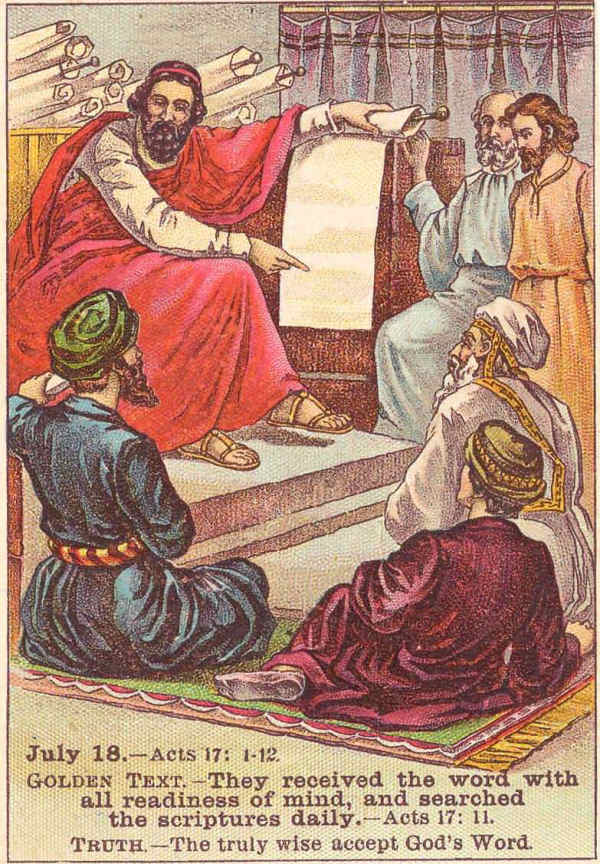+ Blue Letter Bible/KJV + 개역한글 성경구절
글 수 113
2024.6.14 11:21:43

▶ 형상 Image.
Besides the many references to graven and molten images connected with idolatry, which the law strictly forbade the Israelites to make, the word is used in several important connections: for instance, God said, "Let us make man in our image, after our likeness: and let them have dominion . . . . so God created man in his own image, in the image of God created he him." Gen. 1:26, 27; Gen. 5:1; Gen. 9:6. The word translated 'image' is tselem, which is the same that is used for idolatrous images, and for the great image in Daniel 2.
(창01:26, 27; 26 하나님이 가라사대 우리의 형상을 따라 우리의 모양대로 우리가 사람을 만들고 그로 바다의 고기와 공중의 새와 육축과 온 땅과 땅에 기는 모든 것을 다스리게 하자 하시고 27 하나님이 자기 형상 곧 하나님의 형상대로 사람을 창조하시되 남자와 여자를 창조하시고
(창05:1 아담 자손의 계보가 이러하니라 하나님이 사람을 창조하실 때에 하나님의 형상대로 지으시되
(창09:6 무릇 사람의 피를 흘리면 사람이 그 피를 흘릴 것이니 이는 하나님이 자기 형상대로 사람을 지었음이니라
(단02:01- 느부갓네살의 꿈과 그로 인한 곤경
It might naturally have been thought that man at his fall would have ceased to be in the image and likeness of God, but it is not so represented in scripture. On speaking of man as the head of the woman, it says he ought not to cover his head, forasmuch as "he is the image and glory of God." 1 Cor. 11:7. Again, in James 3:9, we find "made after the similitude (or likeness, ὁμοίωσις) of God." In what respects man is the image and likeness of God may not be fully grasped, but it is at least obvious that an image is a representation. The Lord when shown a penny asked 'whose image' is this? They said, Caesar's. It may not have been well executed, and so not have been a likeness. It may also have been very much battered, as money often is, yet that would not have interfered with its being the image of Caesar: it represented him, and no one else. So man as the head of created beings in connection with the earth represents God: to him was given dominion over every living thing that moveth upon the earth and in the sea and in the air. This was of course in subjection to God, and so man was in His image.
(고전11:7 남자는 하나님의 형상과 영광이니 그 머리에 마땅히 쓰지 않거니와 여자는 남자의 영광이니라
(약03:9 이것으로 우리가 주 아버지를 찬송하고 또 이것으로 하나님의 형상대로 지음을 받은 사람을 저주하나니
This is seen in perfection in the second Man, who has in resurrection superseded Adam, who was in this sense a figure or type of Christ. Rom. 5:14. Man may be a battered and soiled image of his Creator, but that does not touch the question of his having been made in the image of God.
(롬05:14 그러나 아담으로부터 모세까지 아담의 범죄와 같은 죄를 짓지 아니한 자들 위에도 사망이 왕 노릇 하였나니 아담은 오실 자의 표상이라
Likeness goes further; but was there not in man a certain moral and mental likeness to God? He not only represents God on earth, but, as one has said, he thinks for others, refers to and delights in what God has wrought in creation, and in what is good, having his moral place among those who do. The likeness, alas, may be very much blurred; but the features are there: such as reflection, delight, love of goodness and beauty; none of which are found in a mere animal. With Christ all is of course perfect: as man He is "the image of God;" "the image of the invisible God." 2 Cor. 4:4; Col. 1:15.
(고후04:4 그 중에 이 세상 신이 믿지 아니하는 자들의 마음을 혼미케 하여 그리스도의 영광의 복음의 광채가 비취지 못하게 함이니 그리스도는 하나님의 형상이니라
(골01:15 그는 보이지 아니하시는 하나님의 형상이요 모든 창조물보다 먼저 나신 자니
--- Morrish Bible Dictionary
개역한글KHRV( 120일1독, 1년1독, 권별, 성경통독 )
STUDY - 구절(WESLEY), 단락(MATTHEW), 읽기(Wayne),
Dictionary - Chapter, OT구약, NT신약, 테마별,
(*.62.179.37)
|
.
성경연대표
1.창조
2.족장
3.출애굽
4.광야
5.정복
6.사사
7.통일왕국
8.분열왕국
9.포로
10.포로귀환
11.중간
12.예수
13.초대교회
14.세계선교
관련그림.지도 1.창조
2.족장
3.출애굽
4.광야
5.정복
6.사사
7.통일왕국
8.분열왕국
9.포로
10.포로귀환
11.중간
12.예수
13.초대교회 Ani
1창세기[Genesis] 2출애굽기[Exodus] 3레위기[Leviticus] 4민수기[Numbers] 5신명기[Deuteronomy] 6여호수아[Joshua] 7사사기[Judges] 8룻기[Ruth] 9사무엘상[I Samuel] 10사무엘하[II Samuel] 11열왕기상[I Kings] 12열왕기하[II Kings] 13역대상[I Chronicles] 14역대하[II Chronicles] 15에스라[Ezra] 16느헤미아[Nehemiah] 17에스더[Esther] 18욥기[Job] 19시편[Psalms] 20잠언[Proverbs] 21전도서[Ecclesiastes] 22아가[Song of Solomon] 23이사야[Isaiah] 24예레미야[Jeremiah] 5예레미아애가[Lamentations] 26에스겔[Ezekiel] 27다니엘[Daniel] 28호세아[Hosea] 29요엘[Joel] 30아모스[Amos] 31오바댜[Obadiah] 32요나[Jonah] 33미가[Micah] 34나훔[Nahum] 35하박국[Habakkuk] 36스바냐[Zephaniah] 37학개[Haggai] 38스가랴[Zechariah] 39말라기[Malachi] 40마태복음[Matthew] 41마가복음[Mark] 42누가복음[Luke] 43요한복음[John] 44사도행전[Acts] 45로마서[Romans] 46고린도전서[I Corinthians] 47고린도후서[II Corinthians] 48갈라디아서[Galatians] 49에베소서[Ephesians] 50빌립보서[Philippians] 51골로새서[Colossians] 52데살로니가전서[I Thessalonian] 53데살로니가후서[2 Thessalonian] 54디모데전서[I Timothy] 55디모데후서[II Timothy] 56디도서[Titus] 57빌레몬서[Philemon] 58히브리서[Hebrews] 59야고보서[James] 60베드로전서[I Peter] 61베드로후서[II Peter] 62요한일서[I John] 63요한이서[II John] 64요한삼서[III John] 65유다서[Jude] 66요한계시록[Revelation]

 , 성경권별
, 성경권별 

